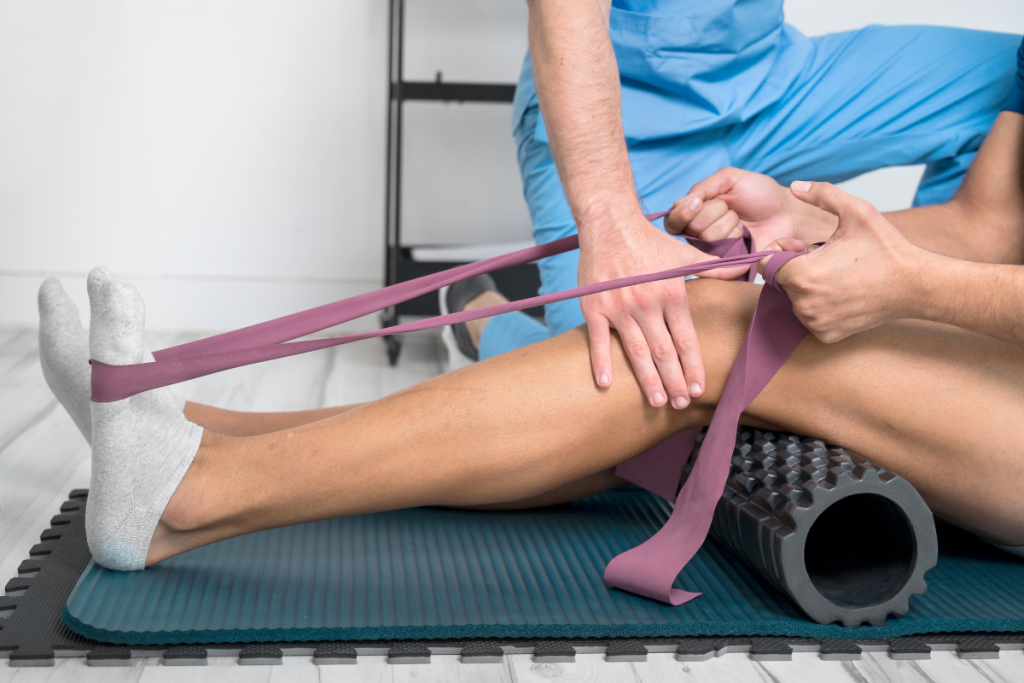Therapeutic Training: what is it and how can it help us

The growing awareness of the importance of physical exercise, both to prevent injuries and for physical and mental well-being, has led to the development of therapeutic exercise, which encompasses a series of methodologies, each with methods and objectives that are partly the same and partly different.
The main types of therapeutic exercise can be divided into three categories: for rehabilitation, for prevention or for physical and mental well-being.
The best professionals for drafting a customised, functional plan are physiotherapists (especially for rehabilitation) and Sport Science graduates (for injury prevention and physical and mental well-being). Even better if the two professional figures work together, interacting to identify the best practical strategies.
REHABILITATION EXERCISES
Starting from therapeutic exercise for rehabilitation, one simple example is that of a patient with non-specific lumbago. In sedentary persons, or those performing heavy-duty work activities, this is quite a common problem and has to be investigated by the expert eyes of a sector professional. The first step is the analysis by a physiotherapist, who may suggest, if the problem is not severe, in addition to manual or instrumental treatments, exercises in the gym, under the guidance of an athletic trainer with a degree in Sport Science. Targeted physical activity can in fact have very significant effects in the short term, and over time stabilise the progress made during the physiotherapy sessions.
The human body is designed to move: unfortunately, sometimes a sedentary lifestyle, hectic rhythms and a low propensity to physical activity lead many people to use their body only for what is strictly necessary, relying on technologies and other means to avoid physical effort. In the long term this leads to an incorrect posture, the worsening of the body composition and, generally, an overall functional weakening of the musculo-skeletal structures and the cardio-vascular system.
In these cases, physical exercise must aim to restore mobility and strength in specific areas, improving posture and general muscle efficiency, reducing any pain symptoms and preventing their return in the future.
PREVENTIVE EXERCISE
In sports, preventive exercise is becoming fundamental. In fact, all sportspersons, whether amateurs or professionals in any discipline, should follow a training programme that aims to prevent injuries that goes hand in hand with a programme to enhance performance.
Of course, there are varying differences from one discipline to another, due to the specific nature of the sport and the parts of the body that are most subject to stress. These aspects must certainly be taken into account, where necessary investigating the performance model of the specific sport when drafting a training protocol.
Another fundamental aspect is the postural analysis of the athlete, which may indicate any weaknesses to work on, linked for example to previous injuries, muscular retractions or postural aspects to be improved.
However, unfortunately injury prevention, particularly for young athletes, is often treated superficially and therefore underestimated. This is even more important for athletes when they reach competitive maturity, or following an injury, as this is when they realise the importance of therapeutic exercise to ensure them “a long competitive life”.
A fundamental role is played by athletic-health care team, who have the task of helping athletes to integrate injury prevention into their performance programme.
EXERCISE FOR PHYSICAL AND MENTAL WELL-BEING
Physical exercise is considered therapeutic even when done by a healthy person, without any specific postural or muscolo-skeletal problems.
When done regularly, physical activity has many advantages, preventing heart disease, helping to reduce body fat, controlling blood pressure, cholesterol and blood sugar levels. It is to all extents and purposes a very powerful drug that has no side effects.
Regular training improves not only physical but also mental health, helping to relieve stress by releasing endorphins, improving moods by controlling serotonin levels, or simply improving self-confidence by reaching the set targets and improving sleep quality.
Now let’s examine a case study for each of the 3 intervention areas.
CASE 1: overweight person with back pain and gonalgia. Rehabilitation Exercise Programme
Imagine we have to work with a clearly overweight person complaining of chronic lumbago and knee pain during and after the working day. The person does an active job that subjects their joints to major stress.
No particular aspects worthy of note are found in the case history, but the diet is completely unbalanced with too many calories.
In this case, the person should follow a combined programme of physiotherapy to reduce the pain symptoms and physical activity 2-3 times a week, for 60-90’ each time. It will be important to include the following in the sessions:
- Progressive aerobic activity, initially preferring exercises with low joint load, such as the bike, then moving onto more dynamic exercises;
- Specific mobility/strengthening exercises aiming to reduce the muscolo-skeletal pain;
- General toning/strengthening exercises, which combined with aerobic activities help to lose weight and improve the body composition;
- A correct, balanced diet, also improving water intake during the day.
This apparently simple work programme is an important step forward for the person, who even after the first sessions will start to feel the benefits, although the improvements will stabilise in the medium term. The programme must not be considered a one-off event, but must represent a new start for the person, who as they feel the improvements will be willing to include these therapeutic activities in their routine, improving their quality of life.
CASE 2: professional tennis player, no specific problems. Preventive Exercise Programme
In this case, things are different: the person is in good shape, an athlete with no specific physical problems, both during and after competitions. Despite this, therapeutic exercise can be valuable, as in athletes the main purpose of training is to improve athletic performance and technical capacities, to increase performance during the competition. Sometimes, indeed often, this is to the detriment of the integrity of the muscle-tendon structures, and can potentially shorten an athlete’s sporting life. To prevent this from happening, training sessions focusing on performance must be accompanied by a correct programme of injury prevention, consisting of:
- Specific strengthening of the rotator cuff, due to the major stress on a tennis player’s shoulder
- A specific pre-training/pre-match routine to prepare the musculature for the match;
- Muscular flexibility and joint mobility exercises in the gym.
Also in this case, the interaction between professional figures is important, the Sport Science graduate oversees the exercise part while the physiotherapist can prepare activities for muscle offloading that act as a preventive or regenerative boost for the athlete.
CASE 3: businessman, former athlete. Complains of high stress and little time for physical activity. Exercise programme for physical and mental well-being
In this case, the person does not complain of any specific physical problems; however, high stress levels caused by work are progressively worsening his quality of life. He has little free time and physical activity is way down on his list of priorities.
The case history does not indicate anything worthy of note, and the diet is fairly regular.
The first stage includes 2 weekly training sessions, of around 60’ each, where the athletic trainer has the task of optimising the little time available by working mainly on 3 target areas:
- Improvement of cardio-vascular strength, with cyclical exercises (running, bike, rowing) or non-cyclic exercises (circuit training), also including coordination stimulation;
- Increase in muscle strength, through circuit exercises with progressive muscle work, with a prevalence of multi-joint exercises (squats, push-ups, deadlifts, etc.);
- Prevention of injuries and pain symptoms, through mobility and core stability exercises.
At the same time, the athletic reactivation programme should be combined with:
- a weekly outdoor session during the weekend depending on the level and preferences (a walk, run, bike ride, etc.)
- a weekly muscle offload treatment with the physiotherapist




